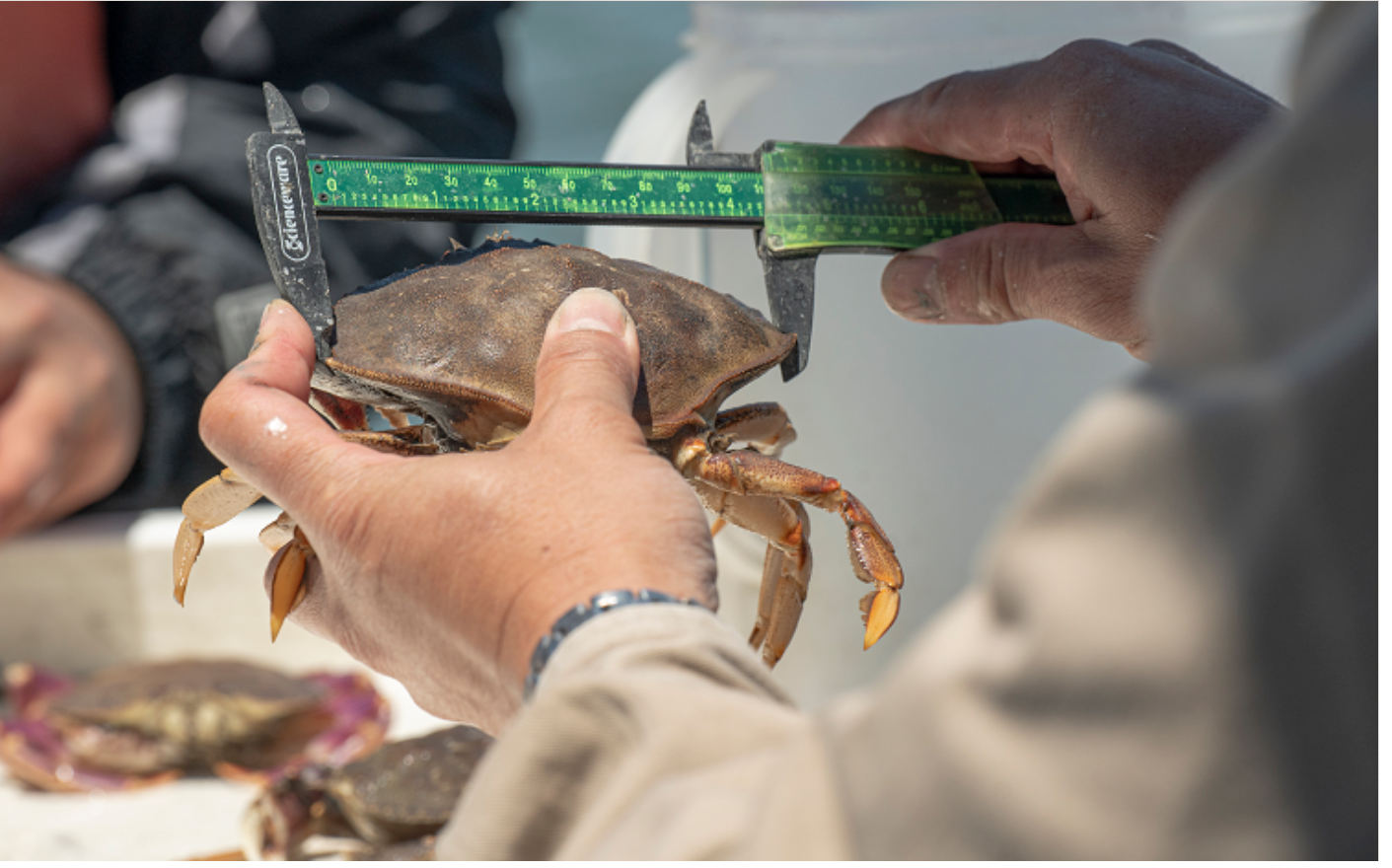From the Interagency Ecological Program (IEP):
The San Francisco Bay Study has been sampling with otter trawls and midwater trawls throughout the San Francisco Bay, Suisun Bay, and Delta since 1980. Their fish data have been used in a number of scientific studies, regulatory decisions, and journal articles. However, did you know they measure and count crabs in their nets too?
Bay Study’s stations are all categorized as “Shoal” (shallow areas) or “Channel” (deeper samples). Crabs are collected by otter trawl, which is towed along the bottom of the water, scraping up whatever demersal fishes and invertebrates it comes across. Truth be told, it’s not the best way to catch crabs, because most crabs like hiding under rocks where they are out of the way of the net, but it does give us a metric of status and trends of some of the most common species of crabs, including the Pacific rock crab (Cancer productus), the graceful rock crab (Cancer gracilis, also known as the slender rock crab), the red rock crab(opens in new tab), and everyone’s favorite, the Dungeness crab(opens in new tab) (Metacarcinus magister).
Click here to continue reading at the IEP website.



